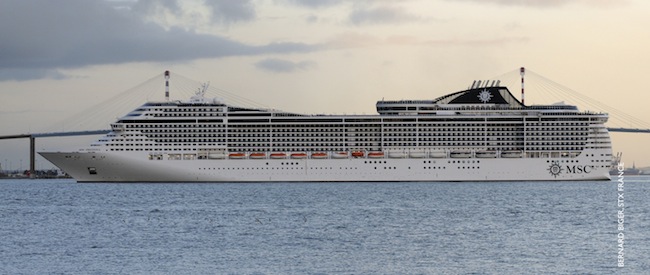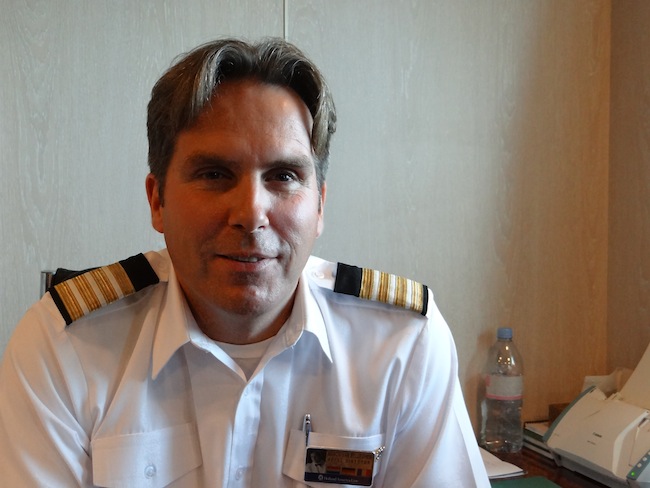World Cruise Tips and Advice
This article shares my first-hand world and extended cruise tips and advice
Have you ever wanted to go on a World or extended cruise? I have done a number of long cruising vacations lasting up to two months and based on my experiences developed these tips on how to prepare, plan and get the most of you are going to head out to sea for several weeks or months. The whole process can be complex and daunting, but if you use this advice you should find the process smoother – plan sailing even!
The first World Cruise with paying passengers was undertaken by Cunard’s RMS Laconia in 1922. It became a tradition that they and many other lines have continued since then. Travelling around the world by cruise ship takes around three months, and usually operates between January and April.

Crossing The Line Ceremony on Cunard Queen Victoria
Planning and Preparation Tips
#1 Be prepared for everyday events at home
In addition to planning the details of the cruise, you must plan for events that may occur at home while you are away. As soon as you deciding to do a trip, start a list of everyday things that happen and could reoccur while you are away. My list had things like ad-hoc costs and charges, meter readings, and contact details for repairmen. I used this to prepare a manual to leave with whoever is keeping an eye on your property while you are travelling.
#2 Get passport ready
Ensure that your passport is valid and has at least six months to run after you get back from the trip, as many countries and lines require this. You should have a number of consecutive blank pages, as this is a requirement for entry into some countries.
You are likely to need to get visas for some countries. The cruise line should alert you to which ones you need and how to get them. But do your own research, as it is your responsibility to have the correct ones. Some can take a while to apply for and may require visits to the country’s embassy in your home country.
#3 Get medically ready
While you need to ensure you have the right vaccinations, if they are recommended or required, it is also advisable to have a medical and dental check-up to pre-empt any issues arising while you are away.
If you take medicines for any health issues, get copies of the prescriptions and ensure you have enough to cover the trip. Some countries ban certain medicines, such as the United Arab Emirates, and so checking these limitations and having copies of prescriptions is essential.
I recommend taking your own personalised first aid kit with all the treatments for ailments you regularly suffer, or think you many encounter. You can then self treat minor issues without incurring high medical centre charges or having to work through foreign medical systems. The on-board shops cannot sell over-the-counter medicines that you usually get from your local drugstore or pharmacy.
If you are from Europe, and some of your cruise is in the European Union, apply for and take your EU Medical Card, which will ensure you can access free healthcare in those countries.
#4 Prepare for the worst
I recommend planning for things to go wrong. Ensure you have an up-to-date will and scan in key documents, like your passport, and email them to yourself and a friend. Alternatively you could make paper copies and share these.
Provide a detailed itinerary to close friends with details on how to contact you at various stages if needed, and include how they contact each other. Check in with them at various points on the trip via social media, Skype or phone calls.
#5 Be Security Conscious
Consider having someone house sitting your property. We found these via TrustedHouseSitters.com and this gave us added security at home. I developed a detailed manual of how the house worked along with copies of the instruction guides for devices and various contact details. I notified the insurance company so they were aware. If you do not have anyone staying in your property then have lights on timers and someone check and clear any telltale signs, like promotional flyers or free newspapers, that signal it is unoccupied.
Check your local government’s advice on travel to the destinations you are visiting. Then you can make considered decisions about what you do there and ensure your insurance is not at risk by ignoring the advice.
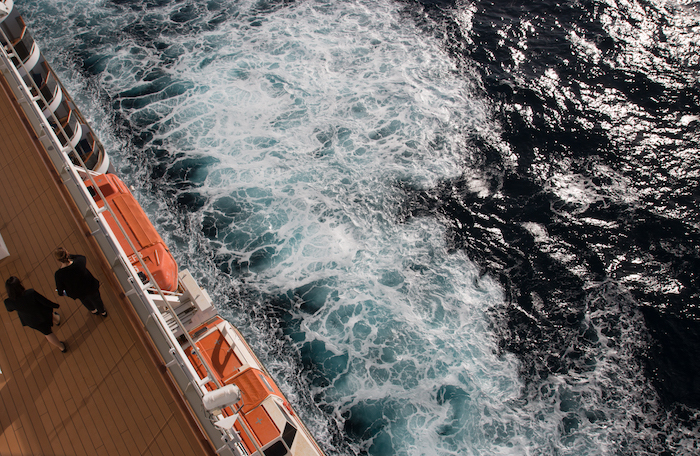
Queen Victoria Ocean
#6 Notify Key Services
You should let your bank and credit card company know you will be travelling, and that they will see charges from various parts of the world. Also ensure your mobile phone operator has enabled you to receive and make calls from overseas.
#7 Insurance
It is essential take out travel insurance. Even if you have an annual policy check with your provider, as many policies restrict coverage to individual trips of less than 30 days. You are likely to need a specific policy for a long trip. Cruise lines usually require you have such insurance for world voyages, but even if they do not it is essential to have it as you will be a long way from home for an extended period of time. The costs can be significant if you have to be evacuated off the ship, spend periods in a foreign hospital or have to be repatriated home.
In addition to medical insurance, ensure you are covered if you have to cut your trip short due to problems at home and for loss and theft. Pick pocketing is common in many ports or you might damage or loose value items like your camera.
#8 Bring some favourite home comforts
Make a note of things that you really like about home. It could be your pillow or perhaps a certain brand of tea, biscuits or TV show. As you prepare to pack see how many of them are viable to bring along with you.
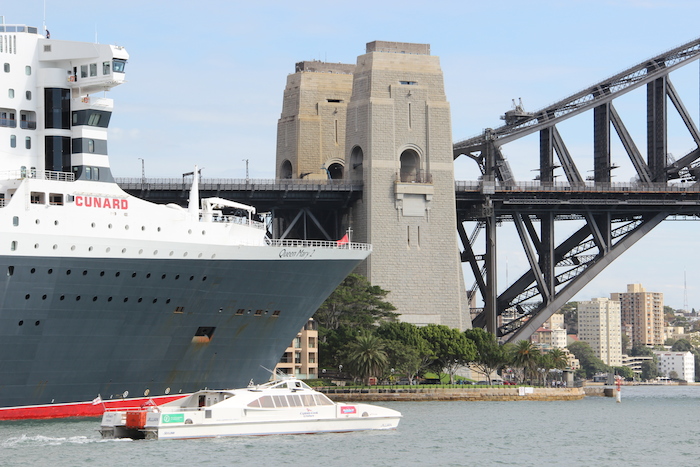
Queen Mary 2 Sydney Harbour
Cruising Advice and Tips
#1 Choose the Right Cruise Line
The most important thing of all is to choose the right cruise line to travel with. The difference between those who loved the voyage I was on and those that hated it were that the former were on the correct cruise line. It is essential for a short trip, but critical if you are going to invest thousands of dollars cruising for an extended period of time.
It is advisable to have cruised with your chosen line before and ideally also on the specific ship before going on an extended trip so you know what you are getting, and that you like it.
#2 Understand the detail of the itinerary
When looking at the itinerary understand what ports you are actually going to be calling on – and how far they are from the destinations you want to visit. Some of the major cities are not always at the port. For example, on my voyage we called at Port Kelang for Kuala Lumpur, Laem Chabang for Bangkok and Port Phu My for Ho Chi Minh City that were all some significant distance and time from the dock.
As you look at your options compare the ports of call and where large ships and small ships doing similar routes are docking. For example when I was in Vietnam, a smaller Silversea ship was docked right in Port Saigon near the centre of Ho Chi Minh City while the Queen Mary 2 had to dock over an hour away.
Pay attention to how many tender and docking ports there will be. In many of the more remote and unusual destinations ships have to anchor offshore and use tender boats to move passengers onto land. On big ships, like Queen Mary 2, this is a major logistical issue and can led to frustrating lines and delays getting ashore.

Queen Victoria Breakfast in cabin
#3 Mix of sea days and ports
Look at the mix of sea and port days when comparing options by taking a careful look at a day-by-day listing of the entire trip. Some published itineraries highlight the date and port but not the sea days in between. There is likely to be periods of many of these at times.
There is a key difference in approach you should be aware of and consider when deciding which type of trip is best suited to your travel preference. World cruises focus on getting rough around the globe and so there will be many sea days as the ship has to cover vast distances. Lines like Cunard offer these cruises. Other lines, especially those with smaller ships, will provide extended voyages which cover a region more intensely and will make frequent stops and cover less total distance.
#4 Budgeting
The cost of the cruise will be significant but the costs once on board may be too. You need to understand what is included in your fare and budget the add-on costs for your cruise, as well as those you will be incurring at home while away.
The major items on the trip can include excursions and touring, which could be large if calling on many ports, visas, gratuities, drinks, spa, souvenirs, Wi-Fi and mobile roaming charges.
#5 Excursions and self-touring
Cruise line excursions on an extended trip can leave you significantly out of pocket. It is worth exploring alternatives before committing to them.
Before going on the trip I recommend you research the ports and decide what you want to see when there and then look at the best way to see them. I use travel guides, port guides on sites like Cruiseable.com, blogs and even Wikipedia. Once I know what I want to see I review what the cruise line offers, tours from independent excursion providers, what private guide services there are, check if the city has hop-on hop-off bus trips and finally if the attractions are within walking distance of where the ship will dock.
In the end I use a combination of these across the trip to offer a varied experience. I am a keen photographer and video maker and find that scheduled excursions tend to give too quick overview of as many sights as possible, often only viewing them from the outside and are not conducive to creating memorable images. So I use options that allow me greater flexibility like hop-on hop-off busses and self-touring using taxis and public transport.
Once on board use the port talks, information sheets and the excursions team who will answer questions and provide tips. You are also likely to meet passengers who have visited the destination before and can give practical advice too.
By self exploring and getting out and seeing places first hand through experiencing public transport and taxis you will also get a better feel for the destination than in the bubble of highly organized tour.
#6 Say fit and manage your diet
Crew on extended trips have told me they observe their guests growing in size from eating at a rate they never would at home. I have returned from my extended trips no heavier than when I went by pacing myself and being more selective about eating. It is possible to eat well and healthily on cruises as most lines offer a Spa or good eating options. I avoid the elevators and use the stairs as much as possible, go on excursions that are include more walking and attend the fitness classes.
#7 Use Technology
If you have a Smartphone or Tablet make sure you know how to use applications like Skype or FaceTime. You will find them invaluable for keeping in touch and sharing your experiences with friends and family. You are likely to miss someone back home and being able to see and chat will be rewarding for both of you. In most ports you will be able to find fast and free Wi-Fi to do this. Just follow or ask the crew – as they will all be doing this as well
I hope these tips help. I loved every minute of my extended trips and will be doing many more. If you have any thoughts and tips to add, please leave a comment and share your ideas with other readers.
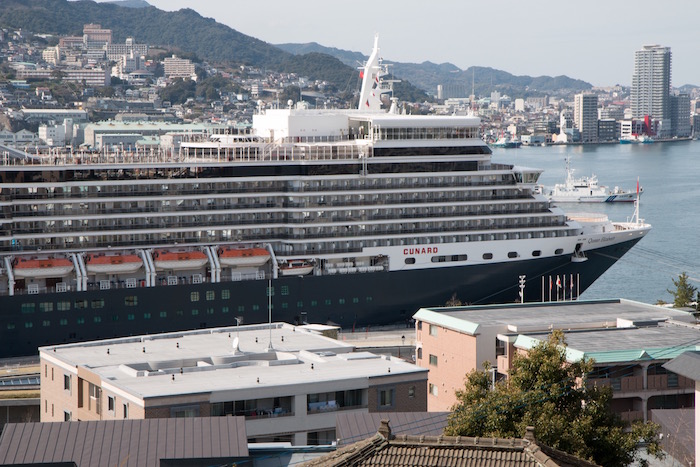
Cunard Queen Elizabeth in Nagasaki Japan
My Day-by-Day World Cruise Insights and Overview
Read my 12-part series of the day-by-day account of one of my world cruises at tipsfortravellers.com/bigtrip2
If you enjoyed this post:
- Follow Tips For Travellers on: YouTube, Instagram, Facebook, Twitter and Pinterest.
- Sign up for the monthly newsletter. includes a free eBook to download every month.
- Never miss a post by signing up for the Latest Tips For Travellers email.
Want to Support Tips For Travellers?
- Book a cruise via The Tips For Travellers Cruise Line: email / UK Phone 0800 852 7801/ Ex-UK +44 1273 836 639
- Next time buying on Amazon USA or Amazon UK click on these links
- Become a supporter via Patreon
- Make a donation via PayPal


